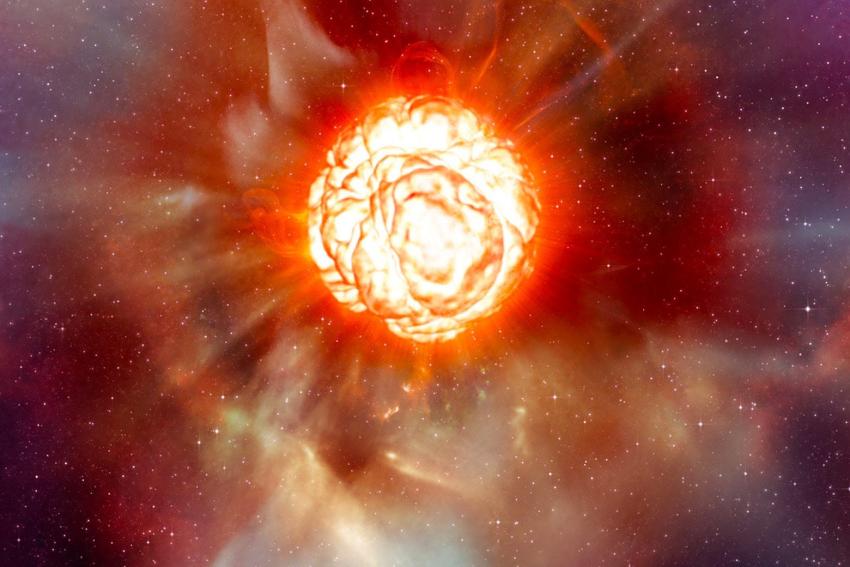Astronomers from Liverpool John Moores University and the University of Montpellier have devised an ‘early warning’ system to sound the alert when a massive star is about to end its life in a supernova explosion. The work was published in Monthly Notices of the Royal Astronomical Society.
In this new study, researchers determined that massive stars (typically between 8 and 20 solar masses) in the last phase of their lives, the so-called ‘red supergiant’ phase, will suddenly become around a hundred times fainter in visible light in the last few months before they die. This dimming is caused by a sudden accumulation of material around the star, which obscures its light.
Until now, it was not known how long it took the star to accrete this material. Now, for the first time, researchers have simulated how red supergiants might look when they are embedded within these pre-explosion 'cocoons'.
Old telescope archives show that images do exist of stars that went on to explode around a year after the image was taken. The stars appear as normal in these images, meaning they cannot yet have built up the theoretical circumstellar cocoon. This suggests that the cocoon is assembled in less than a year, which is considered to be extremely fast.
Benjamin Davies from Liverpool John Moores University, and lead author of the paper, says “The dense material almost completely obscures the star, making it 100 times fainter in the visible part of the spectrum. This means that, the day before the star explodes, you likely wouldn't be able to see it was there.” He adds, “Until now, we’ve only been able to get detailed observations of supernovae hours after they’ve already happened. With this early-warning system we can get ready to observe them real-time, to point the world’s best telescopes at the precursor stars, and watch them getting literally ripped apart in front of our eyes.”
Media Contacts
Gurjeet Kahlon
Royal Astronomical Society
Mob: +44 (0)7802 877 700
press@ras.ac.uk
Dr Robert Massey
Royal Astronomical Society
Mob: +44 (0)7802 877699
press@ras.ac.uk
Science Contacts
Benjamin Davies
Liverpool John Moores University
b.davies@ljmu.ac.uk
Further information
The research appears in ‘Explosion Imminent: the appearance of Red Supergiants at the point of core-collapse’, Benjamin Davies et al., published in Monthly Notices of the Royal Astronomical Society, in press.
Notes for Editors
The Royal Astronomical Society (RAS), founded in 1820, encourages and promotes the study of astronomy, solar-system science, geophysics and closely related branches of science. The RAS organises scientific meetings, publishes international research and review journals, recognises outstanding achievements by the award of medals and prizes, maintains an extensive library, supports education through grants and outreach activities and represents UK astronomy nationally and internationally. Its more than 4,000 members (Fellows), a third based overseas, include scientific researchers in universities, observatories and laboratories as well as historians of astronomy and others.
The RAS accepts papers for its journals based on the principle of peer review, in which fellow experts on the editorial boards accept the paper as worth considering. The Society issues press releases based on a similar principle, but the organisations and scientists concerned have overall responsibility for their content.
Keep up with the RAS on Twitter, Facebook, Instagram, LinkedIn, and YouTube.


